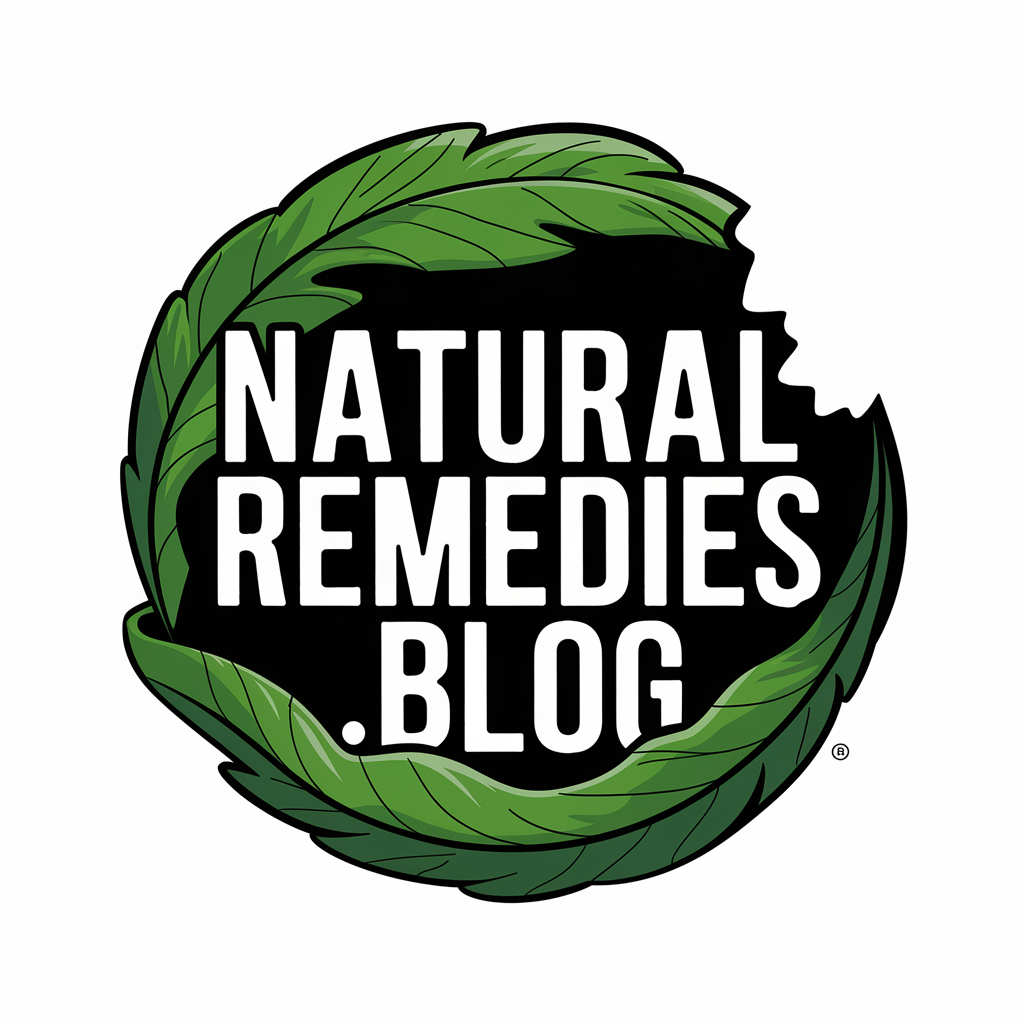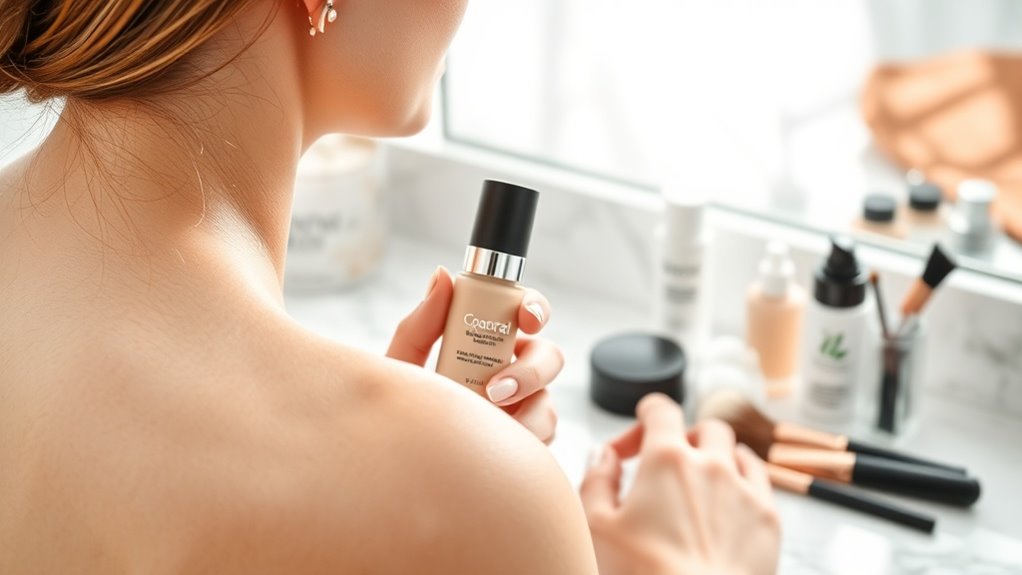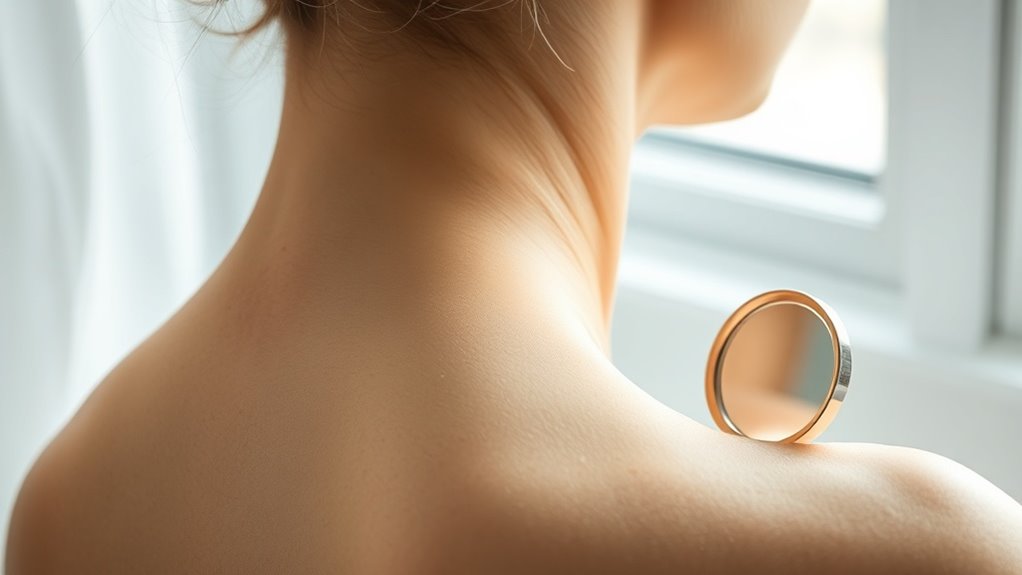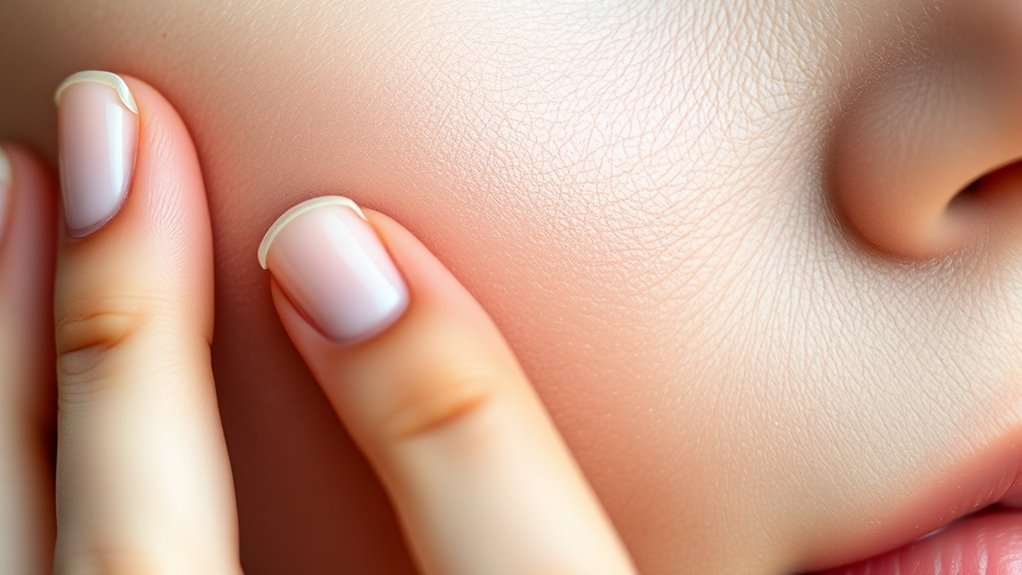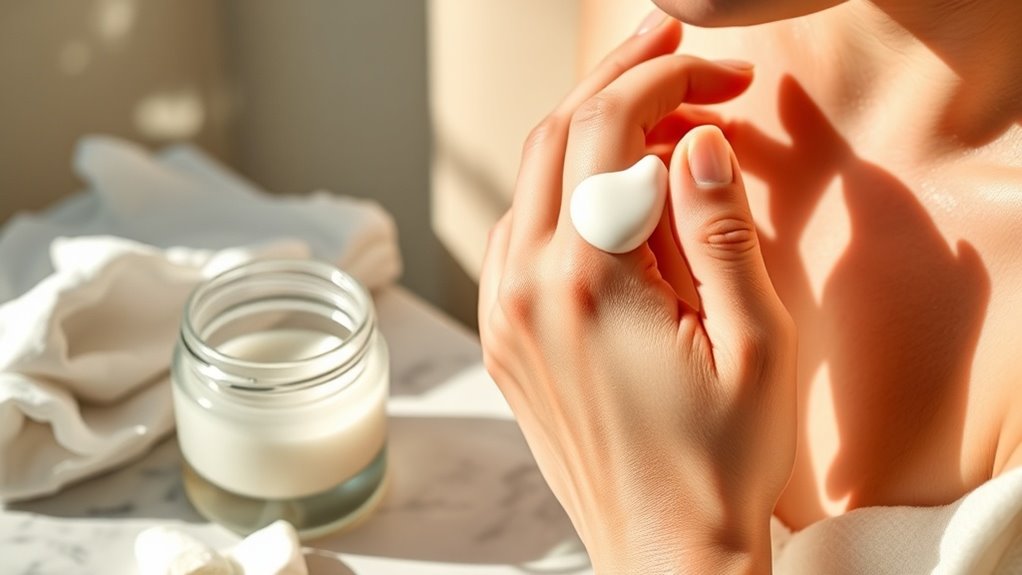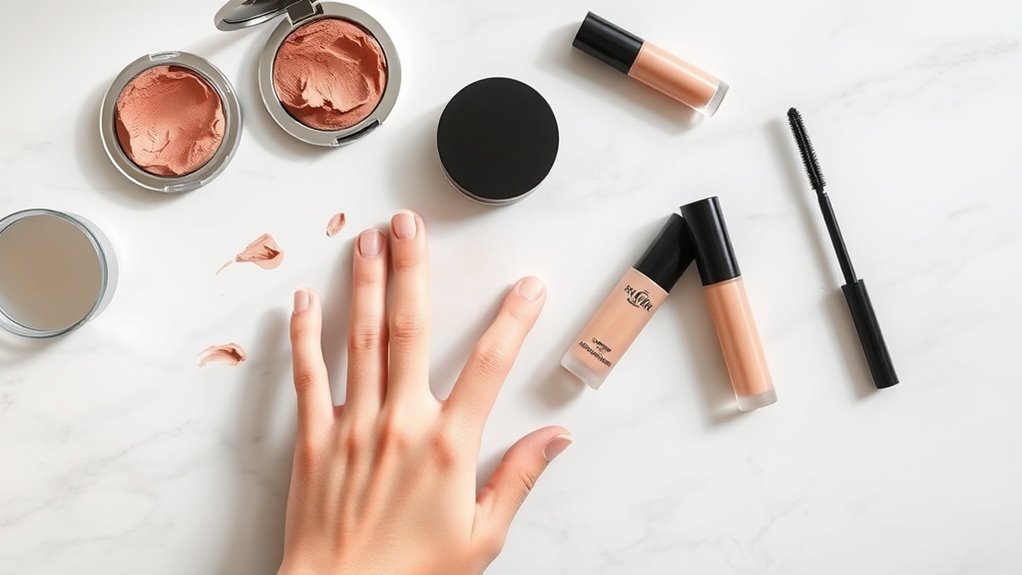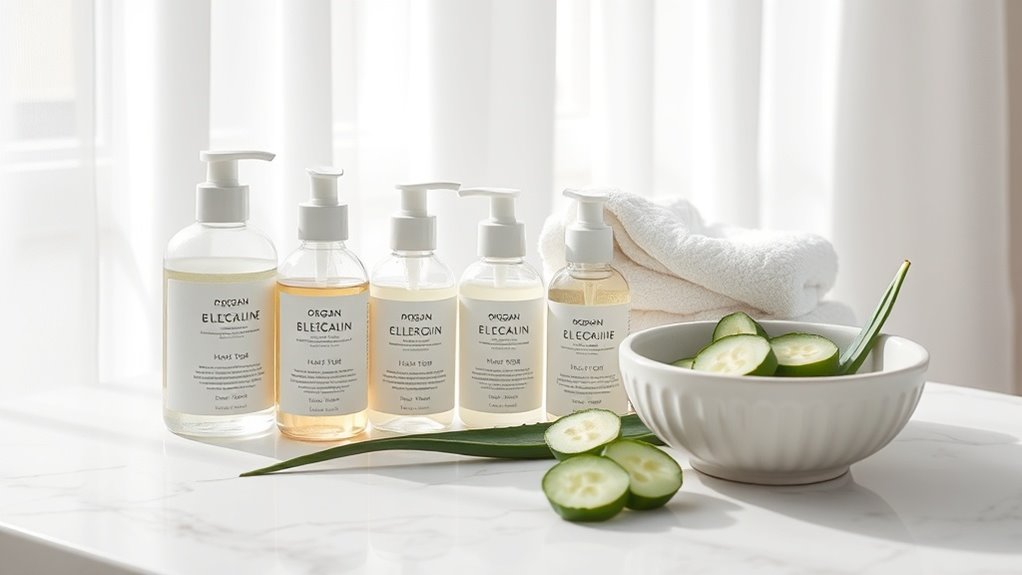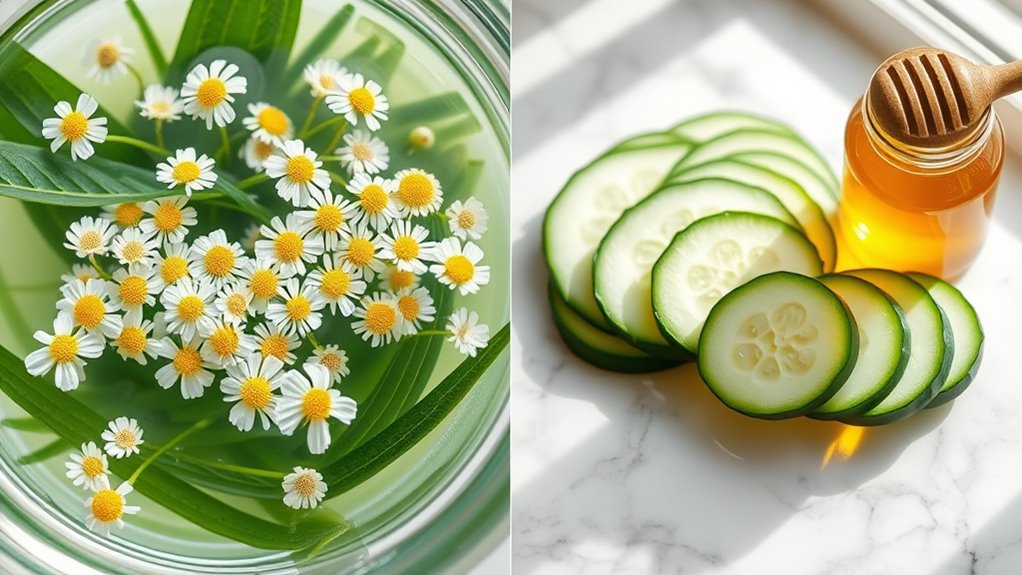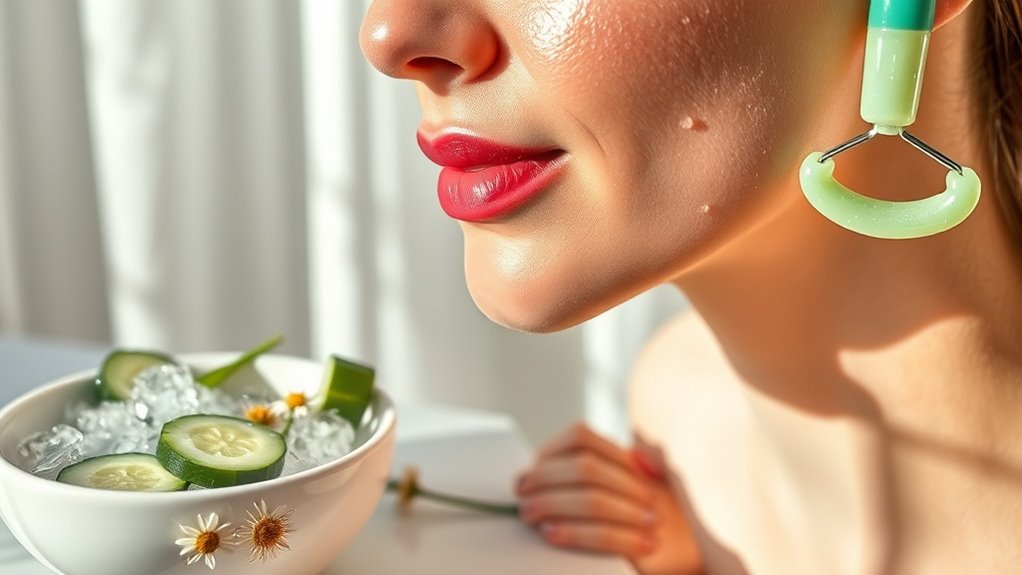What Are 8 Sensitive Skin Tips for Makeup Wearers.
Struggling with redness, irritation, or breakouts every time you apply makeup? Sensitive skin reacts to makeup when cosmetic ingredients disrupt your skin’s protective barrier, triggering inflammation and immune responses that show up as rashes, burning, or flaking. This happens because sensitive skin types have a weakened moisture barrier, making them more vulnerable to fragrances, preservatives, and certain pigments commonly found in makeup products. The good news? You don’t have to choose between wearing makeup and keeping your skin calm. Understanding which ingredients to avoid and how to properly prep your skin makes all the difference. Let’s break down what’s really happening and explore eight essential strategies to help you wear makeup confidently without the irritation.
Choose Hypoallergenic and Fragrance-Free Makeup Products
Individuals with sensitive skin must prioritize hypoallergenic and fragrance-free cosmetic formulations to minimize the risk of allergic contact dermatitis and irritant reactions. You’ll need to scrutinize product labels for potential allergens, including preservatives like parabens and formaldehyde-releasing agents. Fragrances represent the most common cosmetic sensitizers, causing inflammatory responses in compromised epidermal barriers.
Select products labeled “dermatologist-tested” and “non-comedogenic” to reduce pore occlusion and subsequent breakouts. These sensitive skin tips emphasize mineral-based foundations containing zinc oxide or titanium dioxide, which provide physical UV protection without chemical irritants. You should perform patch testing on your inner forearm 48 hours before facial application. Avoid products containing alcohol, synthetic dyes, and essential oils, as these compounds frequently trigger adverse cutaneous reactions in reactive phenotypes. Consider incorporating makeup formulations with anti-inflammatory ingredients like chamomile extract or green tea polyphenols to actively soothe reactive skin while providing coverage.
Always Perform Patch Tests Before Applying New Products
Patch testing constitutes a critical preventive measure to identify contact dermatitis and allergic responses before full facial application of cosmetic products. You should apply a small amount of the new product to an inconspicuous area such as the inner forearm or behind the ear, maintaining contact for a minimum of 24 hours while monitoring for erythema, pruritus, or edema.
Recognition of adverse cutaneous reactions during this observation period enables you to avoid potentially severe inflammatory responses that could compromise your skin barrier function. When selecting makeup products for testing, prioritize fragrance-free formulas that minimize the risk of triggering sensitivity reactions common among those with reactive skin types.
Proper Patch Test Location
Before applying any new cosmetic formulation to facial skin, you’ll need to carry out a systematic patch test on a less visible anatomical site to assess immunological reactivity and potential irritant responses.
Optimal testing locations include:
- Inner forearm (volar surface) – Provides standardized reactivity assessment with thin stratum corneum
- Retroauricular area – Mimics facial skin pH and sebaceous activity
- Lateral neck region – Offers similar vascular supply to facial tissue
- Antecubital fossa – Demonstrates heightened sensitivity for detecting allergens
Apply a small quantity of product to clean skin. You’ll maintain occlusion for 24-48 hours, monitoring for erythema, edema, vesiculation, or pruritus. If dermatological reactions manifest, you’ll discontinue use immediately. Negative results don’t guarantee facial compatibility, but they’ll significantly reduce adverse reaction probability.
Wait Twenty-Four Hours
Following initial product application at your selected test site, you’ll observe a mandatory 24-hour waiting period to detect both immediate hypersensitivity reactions (Type I) and delayed-type hypersensitivity responses (Type IV). This timeframe allows sufficient observation of cutaneous manifestations.
| Time Interval | Reaction Type | Clinical Signs |
|---|---|---|
| 0-2 hours | Immediate hypersensitivity | Urticaria, pruritus, erythema |
| 6-12 hours | Early delayed response | Localized edema, burning sensation |
| 12-24 hours | Delayed hypersensitivity | Papules, vesiculation, dermatitis |
| 24-48 hours | Late-phase reaction | Persistent inflammation, scaling |
Document all observations systematically. Photograph the test site at baseline and 24-hour mark for comparison. If you detect erythema, edema, vesicles, or pruritus, discontinue product use immediately. Absence of adverse reactions indicates probable tolerance.
Recognize Negative Reactions
Several cutaneous manifestations indicate product intolerance and necessitate immediate discontinuation. You’ll need to monitor for adverse reactions systematically, as delayed hypersensitivity responses can emerge 24-72 hours post-application.
Critical warning signs requiring cessation:
- Pruritus accompanied by erythematous patches or diffuse inflammation
- Contact dermatitis presenting as vesicular eruptions or weeping lesions
- Periorbital edema suggesting allergic response to ophthalmic-area products
- Burning sensation with concurrent xerosis or desquamation
If you’ve experienced these symptoms, document the specific formulation and ingredient list. Cross-reference multiple products to identify common allergens—typically fragrance compounds, preservatives, or botanical extracts. Persistent reactions warrant dermatological consultation for comprehensive patch testing. You shouldn’t attempt reintroduction without medical clearance, as repeated exposure intensifies sensitization and compromises your skin barrier function.
Invest in Quality Mineral-Based Makeup Formulations
Mineral-based makeup formulations offer distinct advantages for sensitive skin due to their simplified ingredient profiles and reduced allergen potential. You’ll find these products contain inorganic compounds like titanium dioxide and zinc oxide, which provide natural sun protection while minimizing irritant exposure. They’re free from synthetic fragrances, parabens, and talc—common triggers for contact dermatitis.
| Traditional Makeup | Mineral Formulations | Clinical Benefit |
|---|---|---|
| Synthetic preservatives | Naturally antimicrobial | Reduced sensitization risk |
| Chemical fragrances | Fragrance-free | Decreased allergic response |
| Oil-based carriers | Powder formulations | Non-comedogenic properties |
| Multiple additives | Minimal ingredients | Lower reactivity potential |
Select products with micronized particles under 100 nanometers for optimal skin tolerance. You’re investing in dermatologically-tested formulations that won’t compromise your skin barrier function while maintaining adequate cosmetic coverage. Before applying any new mineral makeup to your face, always patch test the product on your inner arm for 24-48 hours to ensure it doesn’t trigger sensitivity.
Apply Primer as a Protective Barrier Before Foundation
A silicone-based primer creates an occlusive layer between your skin and foundation, functioning as a physical barrier that prevents direct contact with potentially irritating pigments and binding agents. This prophylactic step significantly reduces transepidermal penetration of allergens and minimizes inflammation risk in compromised skin barriers.
Select primers containing these protective ingredients:
- Dimethicone – Forms breathable, water-resistant film preventing antigen exposure
- Cyclopentasiloxane – Volatile silicone that evaporates post-application, leaving protective residue
- Niacinamide – Anti-inflammatory agent strengthening stratum corneum integrity
- Ceramides – Lipid molecules reinforcing intercellular matrix and barrier function
You’ll need hypoallergenic, fragrance-free formulations tested by dermatologists. Apply thin, even layer across facial epidermis, allowing sixty seconds for polymer cross-linking before foundation application. This methodology decreases contact dermatitis incidence while maintaining cosmetic efficacy. Before introducing any new primer into your routine, always conduct patch tests on a small area for 24 hours to identify potential adverse reactions.
Use Clean Brushes and Tools to Prevent Bacterial Irritation
Contaminated cosmetic applicators harbor pathogenic microorganisms—including Staphylococcus aureus, Propionibacterium acnes, and Candida species—that directly inoculate compromised epidermal barriers and trigger inflammatory cascades in sensitive skin.
You’ll reduce microbial colonization by implementing a rigorous sanitation protocol. Cleanse brushes weekly using antimicrobial formulations containing benzalkonium chloride or mild surfactants, then air-dry completely to prevent fungal proliferation. Disinfect metal tools with 70% isopropyl alcohol before each application. Replace sponges every thirty days, as their porous matrices resist thorough decontamination.
Don’t share applicators, which facilitates cross-contamination and pathogen transmission. Store sanitized implements in covered containers to minimize environmental exposure. For an additional natural disinfecting option, you can create a diluted baking soda solution that creates an alkaline environment to discourage harmful bacteria on brush surfaces between deep cleanings. You’re protecting your reactive dermatological barrier by maintaining aseptic technique, thereby preventing contact dermatitis, folliculitis, and opportunistic infections that exacerbate cutaneous hypersensitivity.
Remove Makeup Gently With Suitable Cleansing Products
Because mechanical friction compounds chemical insult during cosmetic removal, you’ll compromise stratum corneum integrity and provoke inflammatory responses in sensitized epidermis.
Select pH-balanced, fragrance-free micellar formulations or oil-based cleansers that dissolve cosmetic polymers without surfactant-induced lipid barrier disruption. Apply gentle pressure using soft, lint-free textiles—never abrasive materials that create microtears.
Evidence-based removal protocol:
- Saturate cotton pads thoroughly to prevent dragging motions that strip protective sebum layers
- Press and hold for 30 seconds on pigmented areas before wiping to allow adequate dissolution time
- Use separate pads for eye makeup to minimize pathogen transfer and secondary irritation
- Follow with lukewarm water rinses to remove residual surfactants without thermal vasodilation
Double-cleansing methodology effectively eliminates particulate matter while preserving intercellular lipid matrices essential for barrier homeostasis. Choose cleansers with antimicrobial properties to enhance the effectiveness of your makeup removal routine while protecting compromised skin barriers.
Keep Your Makeup Routine Minimal and Simple
When you layer multiple cosmetic formulations, you exponentially increase exposure to potential allergens, irritants, and comedogenic compounds that’ll challenge your compromised barrier function. Streamline your regimen to essential products only—primer, foundation, and concealer constitute sufficient coverage for most presentations.
| Avoid | Select Instead |
|---|---|
| Multi-step contouring systems | Single cream bronzer |
| Layered eye shadow palettes | Monochromatic lid application |
| Heavy full-coverage foundations | Tinted moisturizer with SPF |
| Setting spray plus powder | One setting product maximum |
Each additional product increases transepidermal water loss and sensitization risk. You’ll minimize inflammatory responses by reducing chemical exposure while maintaining adequate cosmetic enhancement. Focus on hypoallergenic, fragrance-free formulations with simplified ingredient profiles. This strategic reduction optimizes barrier integrity and decreases cumulative irritant contact dermatitis probability.
Replace Makeup Products Regularly to Avoid Contamination
Although cosmetic products contain preservative systems designed to inhibit microbial proliferation, these antimicrobial agents degrade over time and become ineffective against bacterial colonization. You’re inadvertently applying pathogenic microorganisms directly onto compromised epidermal barriers when using expired cosmetics.
Implement these replacement protocols:
- Mascara (3 months) – Ocular infections like conjunctivitis and blepharitis develop rapidly from contaminated applicators
- Liquid foundations (6-12 months) – Moisture-rich formulations promote bacterial growth, triggering contact dermatitis
- Cream products (6 months) – Fingertip application introduces Staphylococcus aureus and other flora
- Lipsticks (12 months) – Oral microbiome transfer causes perioral inflammation
You’ll minimize iatrogenic sensitization reactions by adhering to manufacturer expiration dates. Discard products that exhibit altered texture, odor, or separation—these indicate preservative failure and microbial contamination.
Frequently Asked Questions
Can Certain Foods Trigger Sensitive Skin Reactions When Wearing Makeup?
Yes, you’ll find that inflammatory foods like dairy, sugar, and processed items can exacerbate cutaneous inflammation and compromise your skin barrier function, potentially triggering contact dermatitis or aggravating existing sensitivities when you’re wearing cosmetic products.
Should I Avoid Wearing Makeup During Skin Flare-Ups or Allergic Reactions?
You should discontinue makeup application during active dermatitis flare-ups or allergic reactions. Continuing cosmetic use can exacerbate inflammation, compromise your skin barrier, and prolong healing. Resume once symptoms resolve and you’ve identified the triggering allergen.
How Long Should I Wait Between Skincare and Makeup Application?
You should wait 5-10 minutes between applying skincare and makeup to allow proper epidermal absorption and ensure cutaneous barrier function stabilization. This interval prevents product pilling, enhances cosmetic adherence, and minimizes transepidermal water loss during application.
Does Drinking More Water Help Reduce Makeup-Related Skin Sensitivity?
You’ll find adequate hydration supports your skin’s barrier function and reduces transepidermal water loss, but it won’t directly prevent contact dermatitis from cosmetic irritants. You must still choose hypoallergenic, fragrance-free formulations for sensitive skin.
Can Weather Changes Affect How My Sensitive Skin Reacts to Makeup?
Yes, weather changes significantly impact your sensitive skin’s makeup tolerance. Temperature fluctuations, humidity variations, and environmental allergens can compromise your skin barrier function, triggering inflammatory responses and exacerbating contact dermatitis when you’re applying cosmetic products.
